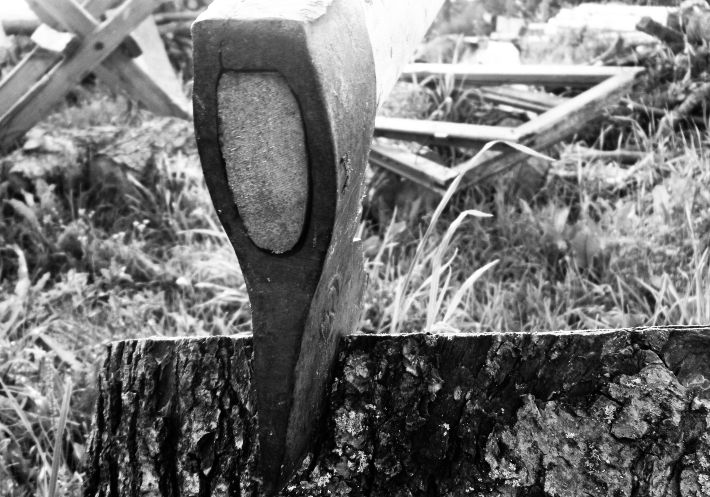Commentary on Isaiah 11:1-10
Isaiah 11 begins with the claim that new life will spring forth from an injured stump: “A shoot shall come out from the stump of Jesse, and a branch shall grow out of his roots.”
It is difficult to say what historical event, if any, lies behind the image of the “stump.” Is this a reference to the exile, in which the Davidic monarchy certainly was cut down, the downfall of the proud Assyrian empire (Isaiah 10:33-34) or is it perhaps a reference to the young Josiah, whose father Amon was assassinated (2 Kings 21:19-26)?1
What seems likely is that this image would have been relevant at numerous points in Israel’s history. Whatever the case may be, the text imagines a new beginning for Judah’s monarchy. In this hopeful future Yhwh’s spirit will alight upon the ruler, resulting in justice for the poor and lowly of the land (verse 4) and a fundamental reordering of creation’s priorities (verses 6-9). Life emerges from death. This is the way of Israel’s God.
The concrete expression of this new future is a ruler on whom the spirit will rest (verse 2). Promise comes to Israel in the form of a person — a human king who embodies the best of Israel’s traditions: He is wise and understanding (verse 2), powerful and effective in war (verses 2, 4), able to judge for the benefit of the poor (verse 3-4), and obedient to God (verse 2, 5). This king rules the world in such a way that the poor are treated righteously, the meek are given a fair hearing, and the wicked are killed. So glorious is this reign that he is literally clothed in righteousness and faithfulness (verse 5).
The king’s righteous reign reorders creation in profound ways:
The wolf shall live with the lamb,
the leopard shall lie down with the kid,
the calf and the lion and the fatling together,
and a little child shall lead them.
The cow and the bear shall graze,
their young shall lie down together;
and the lion shall eat straw like the ox (verses 6-7).
This vision of a reordered creation is remarkable: Predators dwell in harmony with their prey, carnivorous instincts are transformed, and the most vulnerable humans in society (children) are free to play with venomous snakes. Interspecies violence effectively comes to an end and harmony ensues.
Additional insights emerge when these texts are read against their broader ancient Near Eastern background. In the royal propaganda of the ancient near East, royal figures frequently encounter predatory animals, and especially lions. And so it is no surprise to find the royal child depicted as a shepherd among lions. What is surprising, however, is the way in which the young shepherd interacts with them. In general, kings would be depicted fighting and killing lions, not leading them or living among them.
The killing of lions demonstrated one’s worthiness to rule, and was a sign of divine favor. For example, in his bid to fight Goliath David demonstrates his royal credibility when he says to Saul, “Your servant used to keep sheep for his father; and whenever a lion or a bear came, and took a lamb from the flock, I went after it and struck it down, rescuing the lamb from its mouth; and if it turned against me, I would catch it by the jaw, strike it down, and kill it. Your servant has killed both lions and bears; and this uncircumcised Philistine shall be like one of them, since he has defied the armies of the living God.” David said, “The Lord, who saved me from the paw of the lion and from the paw of the bear, will save me from the hand of this Philistine” (1 Sam 17:34-37). The foreshadowing at work here is obvious: David was not only acting like a shepherd; he was acting like a king.
Unlike his ancient Near Eastern contemporaries, however, the Davidic ruler of Isaiah 11 does not hunt lions. Rather, he mysteriously remakes them. And he does so in a way that utterly eliminates predatory violence from the food chain. For Isaiah 11, these are the fruits of the just and righteous reign of David’s descendants. In the summary words of verse 10,
They will not hurt or destroy
on all my holy mountain;
for the earth will be full of the knowledge of the Lord
as the waters cover the sea.
Unsurprisingly, the center of this transformed creation is “my holy mountain,” known otherwise as “Zion,” where God’s temple resides. From Yhwh’s throne in Jerusalem, peace emanates outward, filling the world with knowledge of the Lord. On that day the “root of Jesse” (verse 10) will be like a standard for the nations of the earth, which will seek out Jacob. All nations will be drawn to the family of promise, whose God resides at Zion.
As Christians, it is hard not to see ourselves as those nations that long for the God of Israel, who we know in Jesus, the Jewish descendant of Jesse and David. But a close comparison of Jesus’ ministry with the “ministry” of the king in Isaiah 11 reveals some striking differences. Jesus certainly had a powerful earthly ministry, and he continues to minister graciously in the present through Word, sacrament, etc. But evil still flourishes, the poor and meek remain afflicted, predators continue to kill their prey, violence is still done on God’s holy mountain (verse 9), and the earth is far from being “full of the knowledge of the Lord” (verse 9). If Isaiah 11 were the criteria by which Jesus’ ministry was judged, then one would have to conclude that, on the whole, it falls far short. Christ’s victory remains a hidden victory, or even an unaccomplished one.
Are we forced to conclude then that Jesus was a failed messiah? No, but we may have to concede that his ministry is fundamentally incomplete. A truly Jewish messiah could not leave the world as it is, with evil still on the throne and the poor still in the dust. Isaiah 11 reminds us that Christians, who still long for the messianic completion of creation (i.e., the Second Coming or Parousia), have a great deal in common with Jews, who have historically struggled to see Jesus’ ministry as messianic. At the end of the day, Isaiah 11 does allow us to celebrate Jesus’ ministry in the past and especially in the present, but the text also urges us to the place of intercession, where we long for creation’s promised destiny, as a place where peace, justice, and grace have the final word.
Notes:
1 The latter suggestion has been made by Marvin Sweeney in his, Isaiah 1-39 (FOTL; Grand Rapids: Eerdmans, 1996), 204.


December 4, 2016